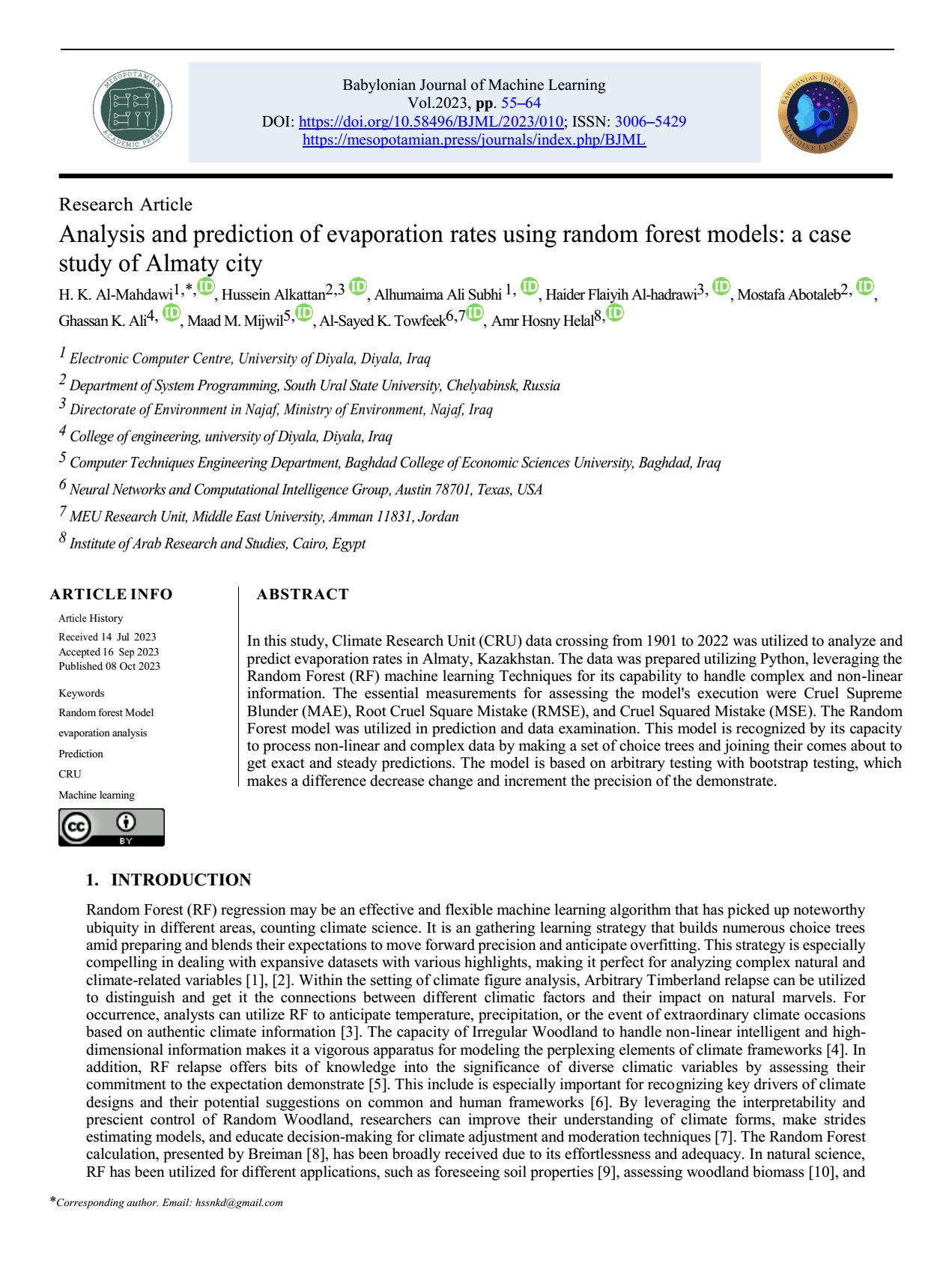Analysis and prediction of evaporation rates using random forest models: a case study of Almaty city
Main Article Content
Abstract
In this study, Climate Research Unit (CRU) data crossing from 1901 to 2022 was utilized to analyze and predict evaporation rates in Almaty, Kazakhstan. The data was prepared utilizing Python, leveraging the Random Forest (RF) machine learning Techniques for its capability to handle complex and non-linear information. The essential measurements for assessing the model's execution were Cruel Supreme Blunder (MAE), Root Cruel Square Mistake (RMSE), and Cruel Squared Mistake (MSE). The Random Forest model was utilized in prediction and data examination. This model is recognized by its capacity to process non-linear and complex data by making a set of choice trees and joining their comes about to get exact and steady predictions. The model is based on arbitrary testing with bootstrap testing, which makes a difference decrease change and increment the precision of the demonstrate.
Article Details
Issue
Section

This work is licensed under a Creative Commons Attribution 4.0 International License.
Deprecated: json_decode(): Passing null to parameter #1 ($json) of type string is deprecated in /home/u273879158/domains/mesopotamian.press/public_html/journals/plugins/generic/citations/CitationsPlugin.php on line 68
